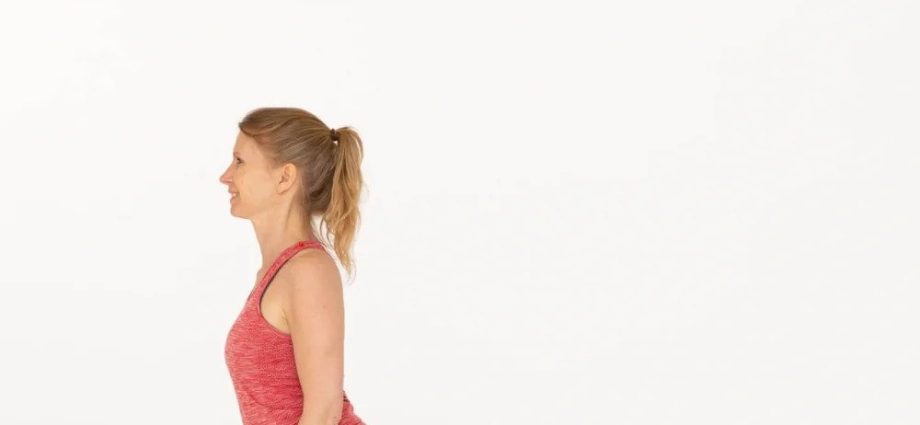Contents
Asana for advanced! Before you come to her, you need to work on the opening of the hip joints, the muscles of the legs and back. But to come to the dove pose in yoga is a must. This asana, although not easy to perform, has serious contraindications, has unique beneficial properties!
For example, it is perfect for those who sit a lot at work or stand. We plunge into business and completely forget that a flexible spine and a relaxed lumbosacral region are the key to our health and youth. It is enough to do the pigeon pose for several minutes every day, as this problem will be solved.
The Sanskrit name for this asana is Eka Pada Rajakapotasana (Kapothasana for short). Eka is translated as “one”, pada – “leg”, capota – “dove”. Well, the word “raja” is known to everyone, it is a king. It turns out: the pose of the royal pigeon. Nice asana! She, indeed, resembles the well-known bird, slightly ruffled, but holding herself with dignity, proud, with her chest forward.
The benefits of exercise
- The main task of the pigeon pose is the full disclosure of the hip joints, preparation for more complex asanas. For example, to the Lotus position (for more details about this position, see our section).
- Asana stretches the entire front surface of the body: ankles, hips, groin, abdomen, chest, throat.
- Stretches, lengthens the deep hip flexor muscles.
- It loosens the sacrum, which is why this asana is so useful for people who have to sit a lot, walk or stand a lot, for example, shop assistants. In such positions, tension accumulates in the sacrum. The dove pose captures it beautifully.
- Improves the flexibility of the spine. It stretches, lengthens it, nourishes all the tissues of the spine.
- Strengthens back muscles and improves posture.
- Strengthens leg muscles and abdominal muscles.
- Opens the chest and shoulder girdle.
- Improves blood circulation in the pelvic organs, abdominal cavity.
- It has a beneficial effect on the functioning of the genitourinary system.
- Stimulates the proper functioning of the reproductive, endocrine and nervous systems of the body
- Asana is also a prevention of thyroid diseases.
Exercise harm
Performing the pigeon pose is contraindicated in:
- back injuries;
- intervertebral discs and lumbosacral;
- cervical spine;
- knee joints and ankles;
- with low or high blood pressure.
With caution – during pregnancy and migraine.
How to Do Dove Pose
ATTENTION! The description of the exercise is given for a healthy person. It is better to start a lesson with an instructor who will help you master the correct and safe performance of the pigeon pose. If you do it yourself, carefully watch our video tutorial! Wrong practice can be useless and even dangerous to the body.
Photo: social networks
Step by step execution technique
Step 1
We advise you to enter this pose from the position of the Dog with the muzzle down (how to do this asana, see our section).
Step 2
Raise the right leg up and stretch behind the leg.
Step 3
Then we “step” with the right knee to your right palm. We take the foot of the right leg to the left – so that the angle at the knee is sharp.
Step 4
We move the left leg a little more back so that we can move from the patella closer to the surface of the thigh. And we wrap the left foot on the outer rib, so that your pelvis is in a closed position, and both iliac bones (the largest in the pelvis) are directed forward.
ATTENTION! If you do everything right, then it will be easy and comfortable for you to sit down with your pelvis down so that both buttocks touch the floor.
Step 5
The first position of the pigeon pose is done with straightened arms. It helps to open up, straighten up and get used to this position.
Step 6
If you’re ready to go further, you can take turns placing your elbows on the floor. First left, then right and join hands in the lock. In this position, we lower our forehead on them. And again, allow yourself to get used to and relax.
Step 7
Now we fully stretch our arms forward and lower our stomach to the inner surface of the thigh.
ATTENTION! We try to go into a slope not from the thoracic region, but from traction in the lower back. Then the asana will be performed correctly.
Step 8
Carefully exit the asana and do it on the other side. Remember that during its implementation there should be no pain and discomfort.
How to ease dove pose
If you feel that it is difficult for you to perform the asana in its full version, then you can place some kind of elevation under your right buttock (a brick, a blanket, and even a pillow). In this position, the pelvis will rise, and it will be easier for you to relax. And this is very important. After all, in tension you will hold yourself back and not let go deeper.
For people with bad knees, this position may also not be available. We advise you to move your foot slightly forward so that the angle at the knee forms 90 degrees. And perform asana also with a blanket or a brick. There must be a reasonable approach in everything.
Have a great practice!










